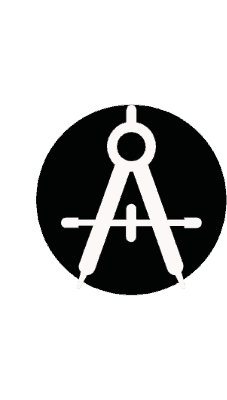One of the most interesting parts of my job as an Associate Professor is the feedback I receive from employers and students about job opportunities and career goals. It is fascinating to hear the needs and wants of both groups and to strive to help match the right student with the right employer. Sometimes it works beautifully, other times not so much. But each time I learn a little more about how to become a better matchmaker for the industry.
A key piece of my work revolves around developing and evaluating summer internship programs within the landscape architectural and design industries. I work extensively with students in confirming summer internship positions, and I help mentor businesses on ways to attract the top students and create internship programs that successfully train their future workforce.
In this article, I am going to describe some of the most important aspects of a professional internship. The advice should be helpful to students who are looking for an internship program, but also should benefit employers on the best practices for running a successful internship. Over the past decade of assisting both groups, I believe the key areas I highlight below are critical for advancing the careers of students, while also benefiting businesses with the proficient prospects of new hires.
What Do We Actually Define As An “Internship”?
I remember my first “internship” (quotation marks intentional). During the summer before I went to college, I submitted my resume to a landscaping business in the hopes of getting some real-world landscaping experience before heading to university to study landscape architecture.
I received a call within a few days telling me that although there weren’t any paid positions available, they would love for me to be an “intern” and learn about the industry. Since they weren’t able to pay me, they promised that I would get great hands-on experience and learn valuable skills. After some negotiations about hours, I took the unpaid “internship” while also being able to work at a local movie rental store to gain some income (for students reading this – yes, there was a time when you had to actually go to a store to rent movies!).
Within the first week of the so-called “internship”, I quickly realized I was sold a lie. The manager had me loading the truck, unboxing items at the retail storefront, breaking down pallets, making lunch runs, and then off-loading the trucks. I never traveled with the landscape crew and I never maintained any plant material. I was unpaid grunt labor, plain and simple.
When I pressed my boss on the issue, I was merely shrugged off and told this is where everyone starts. Being raised by two parents that instilled the values of commitment and responsibility in me at a young age, I continued with the work I agreed to do until the end of the summer. Upon the completion of this “internship”, I realized some harsh but valuable lessons.
Luckily, in future years, I learned to inquire about the day-to-day tasks I would be conducting and how they aligned with the overall company’s work. Nevertheless, that first summer was a wake-up call. My story highlights a crucial question for both employers and students. What do we actually mean by the term internship?
The U.S. Department of Labor has a good informational sheet which reviews what is called the “primary beneficiary test”, which helps determine if someone is an intern or actual employee of the business. The 7 key items of the test include:
- The extent to which the intern and the employer clearly understand that there is no expectation of compensation. Any promise of compensation, express or implied, suggests that the intern is an employee—and vice versa.
- The extent to which the internship provides training that would be similar to that which would be given in an educational environment, including the clinical and other hands-on training provided by educational institutions.
- The extent to which the internship is tied to the intern’s formal education program by integrated coursework or the receipt of academic credit.
- The extent to which the internship accommodates the intern’s academic commitments by corresponding to the academic calendar.
- The extent to which the internship’s duration is limited to the period in which the internship provides the intern with beneficial learning.
- The extent to which the intern’s work complements, rather than displaces, the work of paid employees while providing significant educational benefits to the intern.
- The extent to which the intern and the employer understand that the internship is conducted without entitlement to a paid job at the conclusion of the internship.
This standard for internships is fairly new, adopted by the U.S. DOL in 2018, replacing older more ridge requirements set in 2010. As you move on to the next sections of this article, I hope to clarify these definitions of an internship with more realistic and commonplace examples.
Planned Learning Goals
One of the biggest mistakes I see most students and employers make when developing an internship is the lack of planned learning objectives or tasks. This lack of early communication often causes problems either for the student, who did not realize the actual work he/she was going to be doing, or the employer, who didn’t understand the relative skill level of the student intern.

If you are a student, you should review internship programs based on a few criteria. First, see if the company has an advertised internship program and designated application. This should be different than a regular job application and should be clearly visible on their website.
From my experience, companies that have dedicated internship programs are the ones that better understand student needs and provide better communication as to the benefits the student will receive interning.
But not all businesses have the ability to develop this type of formality to their internship process. I actually provide a “Learning Contract” to my students that they bring to the employer during their first day/week of the internship. The contract is simply an agreement between the intern and supervisor as to what will be expected by both parties during the internship period. The most important piece of the contract are the learning goals, where the employer needs to identify how this internship role will be different than standard employment.
The learning goals of an internship can be abstract or literal. For example, good learning goal might read “The intern will be developing construction documentation and landscape renderings in AutoCad or other computer programs for several company projects.” This type of detail provides the student a clear picture of what they will be working on and how it relates to the company.
Another slightly more abstract goal, could read, “The intern will shadow our landscape design team on potential job calls in order to learn how to interview, meet, and sell customers on design services.” This learning objective is not as technical as the previous computer work, but it still provides a clear indication of what can be expected in the program.
So then, what makes a poor learning goal?
From my experience, poor learning goals are typically small snippets of catchy terms that may seem relevant to the landscape field, but provide no substance for the student. Some bad learning goals I have seen over the years include:
“The intern will be extensiely involved in the landscape design process.”
“The intern will be trained on handling real customer service related issues.”
For each of these, any reasonable person could ask the follow-up question – “how?”. Let’s take for example the first objective above – learning the landscape design process. Taking site measurements, cleaning up existing AutoCad files, or binding image portfolios can be important parts of a design project, but individually they won’t really teach a student much about how a company handles and streamlines the overall design process.
Honestly, some students might want to learn how to take better site measurements, or how to professionally bind portfolios. Employers should be open and honest about their needs.
My advice for both students and employers: be careful of poorly worded and broad promises for learning outcomes during an internship. For students, these broad and undefined goals can indicate that an employer may be trying to sell you a promise that may never be kept.
For employers, you should understand that students talk, not only amongst peers but also within the industry, and to other employers. If you want to maintain a level of integrity and a good reputation within the region while also attracting quality talent, steer clear of undefined goals and clearly describe the tasks of the internship.
Now that we know how to communicate our goals within the internship – what can we expect within a good internship program?
Rotation of Responsibilities
The primary role of an internship program is to assist in fostering the development of emerging design professionals while simultaneously benefiting the landscape company through the completion of basic entry-level work tasks. Keeping this in mind, great internship programs often create a schedule, or predetermined work modules, that moves the intern around the company’s various functional areas.
By creating a rotation of responsibilities throughout the internship program, whereby a student moves from one area to the next, not only does it help clarify the real-world expectations of the position, but also can assist in identifying the strengths and weaknesses of a potential employee.
I have seen this accomplished many ways. Typically, an employer will have a student work within a group or team for 2-3 weeks focusing on a specific task, before transitioning them to the next team. This allows roughly 4 different work-experiences throughout the internship and provides great learning opportunities for the student.
For example, perhaps a multi-disciplinary design firm starts an intern within the office design team, then moves him/her to the landscape installation crew, before finally transitioning him/her to the sales team. For smaller offices, where employees are responsible for multiple daily tasks, the transitions can be done daily, but with emphasis on specific areas on a week to week basis. (For example, perhaps the student does design renderings and assists with on-site evaluations, but the focus of the week is to see how they relate to each other.)
The most important thing to avoid is having a stagnant experience. I once interviewed for a landscape architectural internship program during my second summer in college and was told, in no uncertain terms, that I would be drafting AutoCad construction details 8 hours per day, every day, for the whole summer.

Although I applauded the supervisor’s honesty (and completely agree on the value of getting real experience drafting construction documents), I was an emerging professional looking to find my place within the field. If I were to be stuck in that one role for the whole 12 week internship, I would likely sour on the industry and think twice about continuing my studies in landscape architecture.
If the company had supplemented the AutoCad work with even 1 day per week where I was able to shadow other team members completing design work or meeting with clients, it would have made the experience much more enriching. The issue was clear – the employer was looking for an employee, not an intern.
This brings us to the final and most important piece of the internship – having realistic standards. Something both employers AND students need to keep in mind.
Realistic Standards
If there is one thing I have found to be true about students, it is that they are wonderfully idealistic and have no problem voicing their opinions to employers, for better or worse. One great example from a few years ago still sits with me, where a very bright and conscientious young student landed a great internship opportunity at a highly-recognized wholesale nursery.
As part of the requirements for my college’s internship experience, students are asked to write journals summarizing their experiences at the company. Within the first few weeks of the internship, the student had many critical things to say about the nursery, its practices, and procedures. I tried to counsel her to keep an open-mind and learn the reasons behind the nursery’s standards, but to no avail.
She continued to voice her displeasure with their work and not only wrote to me, but consistently complained to other coworkers. Needless to say, the criticism was unwarranted, and she was soon let go from her internship due to poorly formed relationship. I believe it was a dose of reality for both her and me on the realistic standards of the marketplace.
Students should realize that internships are not summer camp. You may be asked to do things that you assume are “beneath you”, but that are just a reality of work life. These might include coffee runs, lunch orders, taking minutes of meetings, making copies, and other menial tasks. They are not fun or sexy but they are an essential part of keeping an office running efficiently. As long as most of your day isn’t filled with this type of work, try to keep your chin up and be a team player – it will go a long way toward demonstrating your work ethic to your employer.
Even in my current role as Associate Professor, after design studio sessions I go around and wipe-down all the desks and sweep the floors. Do I have to? No. But it illustrates to my students that there is no place for laziness in my classroom – and if I ask them to sweep for me, they realize it is something I also help with.
A book that I often recommend for both employers and students who are trying to improve their workplace habits and behaviors is Principles: Life & Work by Ray Dalio. It is a great guide for internships because speaks not only to the mindset of a student, but also has relevant information for successful businesses to optimize their own performance as well.
Realistic standards should be understood by employers as well. There are many times where employers may expect more proficiency at certain skills than a student is capable. The reality is that many of these students have multiple classes, learning many different things, so they have not had the time to master one specific skill. Since they are only interns, try to maintain an open-mind and flexibility with their skill level and encourage them to stay longer hours to practice or finish their required work.
End of Internship Evaluations and Next Steps
Internship programs typically have a predetermined time-period for which they run. Afterward, the student and employer mutually agree to end the relationship. For small offices, employers will usually offer a nice thank you card along with a gift-certificate of some kind, while larger companies might actually throw a party for all of the interns within the program.
Students should make sure, whether formally or informally, to take a moment and thank their employers for the internship experience. A nice card or hand-written letter would go a long way toward developing a future relationship for references or consultation. Students should also not be afraid to ask for a reference letter, or for their supervisor’s contact information for future job openings.
Hopefully through this article, I provided some helpful insight into the standards and practices of successful internship programs. As you further your educational goals, think about your career objectives and their alignment with future internship prospects. As long as you keep an open mind and communicate effectively during internship interview process, I am sure both you and your employer will have successful internship experience.
If you liked the content of this article, be sure to also check out our Design Resources section and Business Planning articles for all the most recent information in the Landscape Design field.
____________________________________
Important Legal Disclaimer: This site is owned and operated by Draftscapes. We are a participant in affiliate marketing programs designed to provide a means for sites to earn advertising fees by linking to participant vendors. Affiliations include Utrecht Art Supply and Amazon Associates. Draftscapes is compensated for referring traffic and business to these companies. Recommendations for products or services on this site are not influenced through the affiliation.


